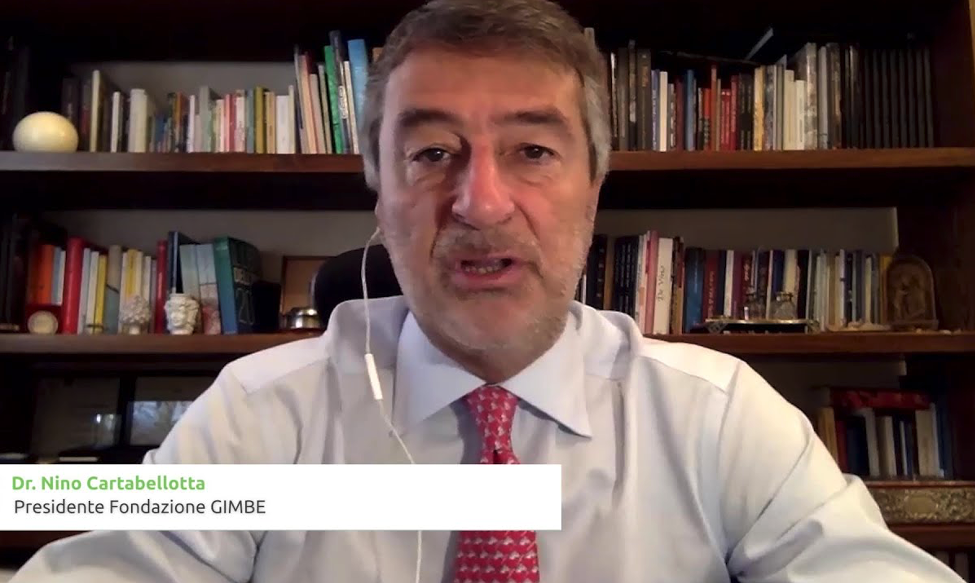Coronavirus: infections run, +55% in a week. Ordinary hospitalizations (+32.6%), intensive care (+36.3%) and deaths (+18.4%) are growing. 38 Provinces with over 1,000 cases per 100,000 inhabitants. Fourth dose: administrations remain at the stake. Using masks to contain viral circulation, avoid a "de facto lockdown" and stem the progressive hospital overload
The percentages of those who received at least one dose of vaccine (88.1% of the audience) and of those who completed the vaccination cycle (86.6% of the audience) are unchanged. There are 6.84 million unvaccinated, of which 2.75 million healed protected only temporarily. 7.89 million people have not yet received the third dose, of which 2.43 million recovered who cannot receive it immediately.
Clear regional differences for coverage with fourth doses of the immunocompromised (from 10.7% of Calabria to 100% of Piedmont) and of the other frail (from 6.6% of Calabria to 41.3% of Piedmont). Risky postponing the fourth dose to autumn with the "updated vaccines" whose effects on serious illness are not known to date.
7 luglio 2022 – Fondazione GIMBE, Bologna
Vaccines: third dose. As of 22 June (update at 06.16) 39,720,529 third doses were administered with a 7-day moving average of 5,948 administrations per day. Based on official audience (n. 47.703.593), updated to 20 May, the national coverage rate for third doses is 83.3% with clear regional differences: from 77.5% in Sicily to 87.3% in Valle D'Aosta. There are 7.98 million people who have not yet received the dose boosters, of which:
- 5.51 million can receive it immediately, equal to 11.5% of the audience with clear regional differences: from 8.2% in Basilicata to 16.8% in the Autonomous Province of Bolzano;
- 2,47 milioni non possono riceverla nell’immediato in quanto guarite da meno di 120 giorni, pari al 5,2% della platea con nette differenze regionali: dal 2,4% della Valle D’Aosta al 8% dell’Umbria.
Vaccines: efficacy. THE data from the National Institute of Health demonstrate that:
- efficacy on diagnosis remains substantially stable from 40.8% for those vaccinated with two doses within 90 days to 45.9% for those vaccinated for more than 120 days, to then rise to 55.2% after the booster;
- the efficacy on severe disease remains substantially stable from 69.2% for those vaccinated with two doses within 90 days to 71% for those vaccinated for more than 120 days, to then rise to 86.5% after the booster.
Overall, in people vaccinated with a complete cycle (plus any booster dose), compared to those not vaccinated, the incidence of diagnosis is reduced in the various age groups (by 4.3-59.8%): with the exception of group 5 -11 years for which the diagnoses among the vaccinated score a +22.6% compared to the unvaccinated and the 40-59 range with a +10.4%. In all age groups, the incidence of serious illness decreased above all (by 24-78.9% for ordinary hospitalizations; by 42.1-85% for intensive care) and death (by 42.5-88.4%).
Vaccines: fourth dose immunocompromised people. As of 22 June (update at 06.16) 316,667 fourth doses were administered, with a moving average of 1,862 administrations per day, down compared to the 2,283 of last week (-18.4%) (figure 17). Based on official audience (n. 791.376), updated to 20 May, the national coverage rate for the fourth doses is 40% with clear regional differences: from 8.8% in Calabria to 100% in Piedmont.
Consequently, the GIMBE Foundation calls for caution for at least three reasons.
- First of all, the number of positives (about 600,000) is largely underestimated due to the massive use of do-it-yourself swabs with partial notification of positive tests;
- secondly, it is impossible to estimate the extent of this early summer upwelling and the times to reach the peak;
- finally, the stalemate of the vaccination campaign has generated a population currently susceptible to very extensive infection: 4.03 million unvaccinated, 5.51 million without a third dose and 4.05 million vulnerable people without a fourth dose.
Consequently, in this phase of the pandemic it is essential to reduce viral circulation, in particular by wearing a mask in indoor premises, especially if crowded and/or poorly ventilated and in conditions of large gatherings even outdoors. The institutions, for their part, must strengthen the vaccination campaign in all people at risk of serious illness, increasing coverage with the third dose in the over 50s and with the fourth dose in all vulnerable people included in the audience. Last but not least, avoid disorienting the population with anti-scientific and risky proposals for public health, such as the abolition of isolation for positives".
Il monitoraggio GIMBE dell’epidemia COVID-19 è disponibile a: https://coronavirus.gimbe.org
Video increase infections and fear variants
Note: La Fondazione GIMBE, che non ha fini di lucro, ha lo scopo di favorire la diffusione e l’applicazione delle migliori evidenze scientifiche con attività indipendenti di ricerca, formazione e informazione scientifica, al fine di migliorare la salute delle persone e di contribuire alla sostenibilità di un servizio sanitario pubblico, equo e universalistico. GIMBE è una fondazione di diritto privato costituita dall’associazione Gruppo Italiano per La Medicina Basata sulle Evidenze il 23 giugno 2010.
The President of the GIMBE Foundation is Nino Cartabellotta, a doctor who is now recognized as one of the most authoritative experts in research and health in our country, thanks to his transversal skills that affect all levels of the health system.
Related news: Palio effect on infections in Siena, exponential growth of positives
Covid, l’ondata che nessuno aspettava. I dati del 3 luglio in Toscana, balzo dei ricoveri
Ministero della Salute. Monitoraggio settimanale Covid-19, report 27 giugno – 3 luglio 2022
